
How to Use Type-C USB 2-3S BMS 15W: Examples, Pinouts, and Specs
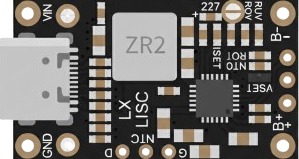
 Design with Type-C USB 2-3S BMS 15W in Cirkit Designer
Design with Type-C USB 2-3S BMS 15W in Cirkit DesignerIntroduction
The Type-C USB 2-3S BMS 15W is a compact and efficient Battery Management System (BMS) designed for managing 2-3 cell lithium battery packs. It features a Type-C USB interface for charging and data transfer, making it highly versatile and user-friendly. This component ensures safe and reliable operation of lithium battery packs by providing overcharge, over-discharge, and short-circuit protection.
Explore Projects Built with Type-C USB 2-3S BMS 15W
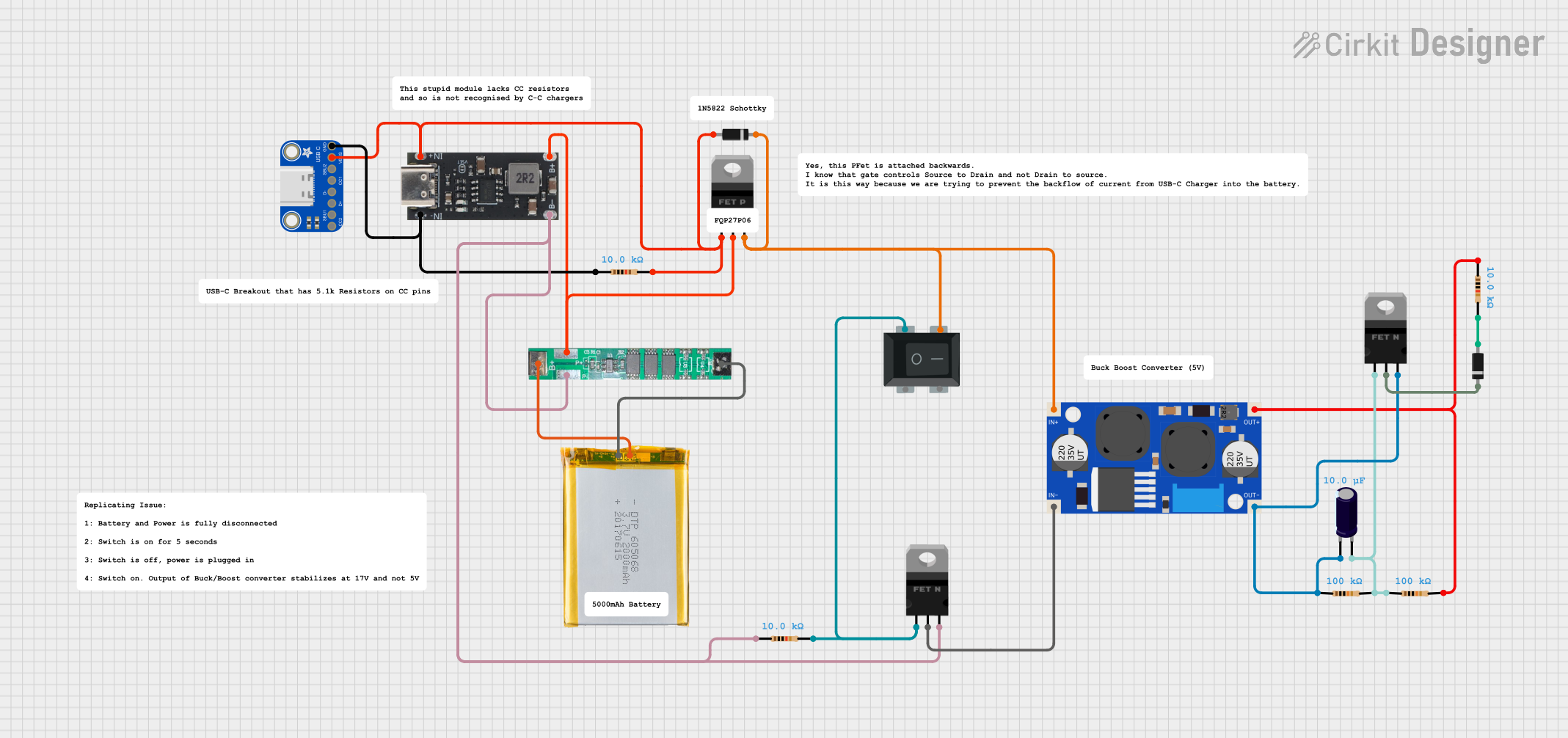
 Open Project in Cirkit Designer
Open Project in Cirkit Designer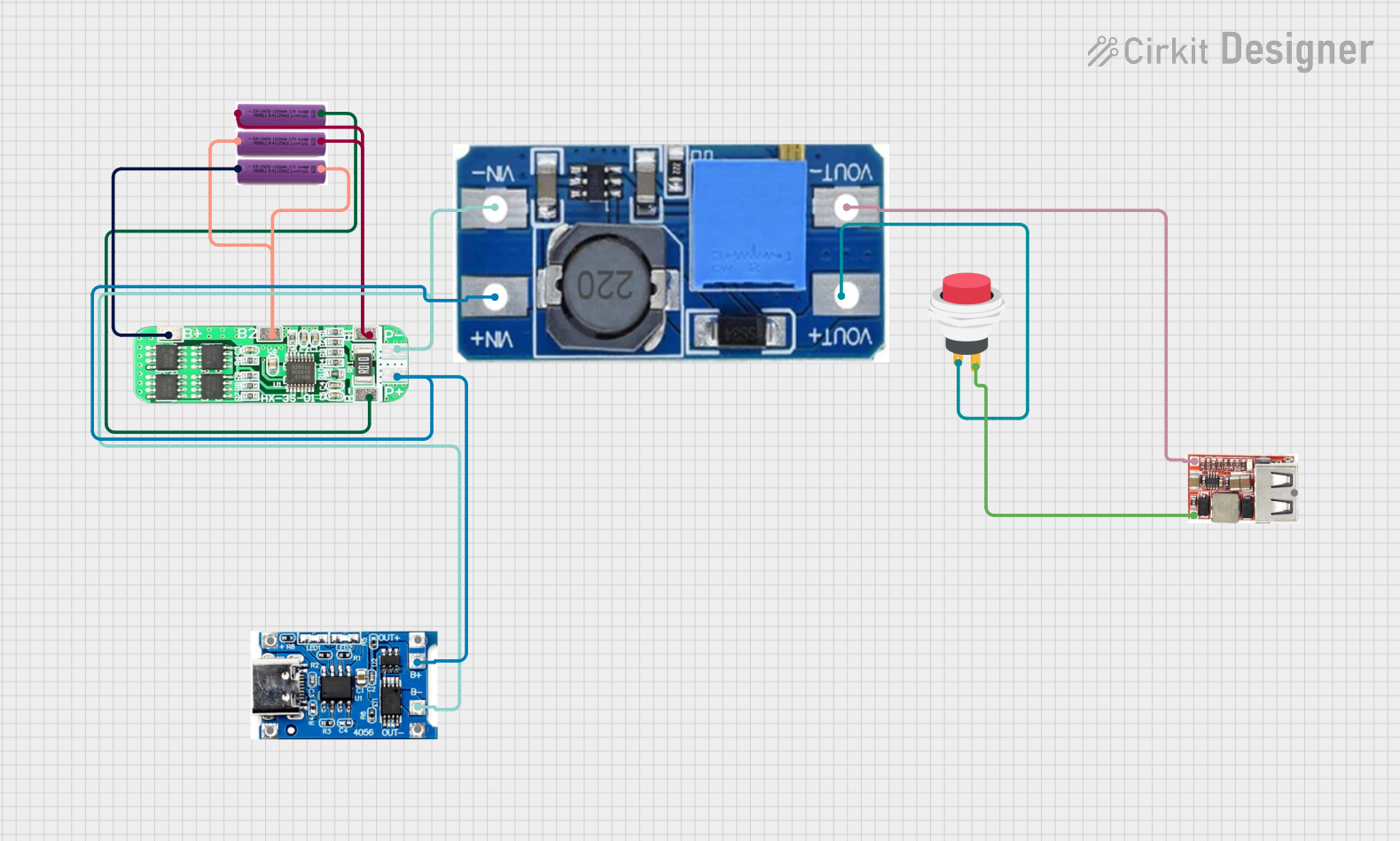
 Open Project in Cirkit Designer
Open Project in Cirkit Designer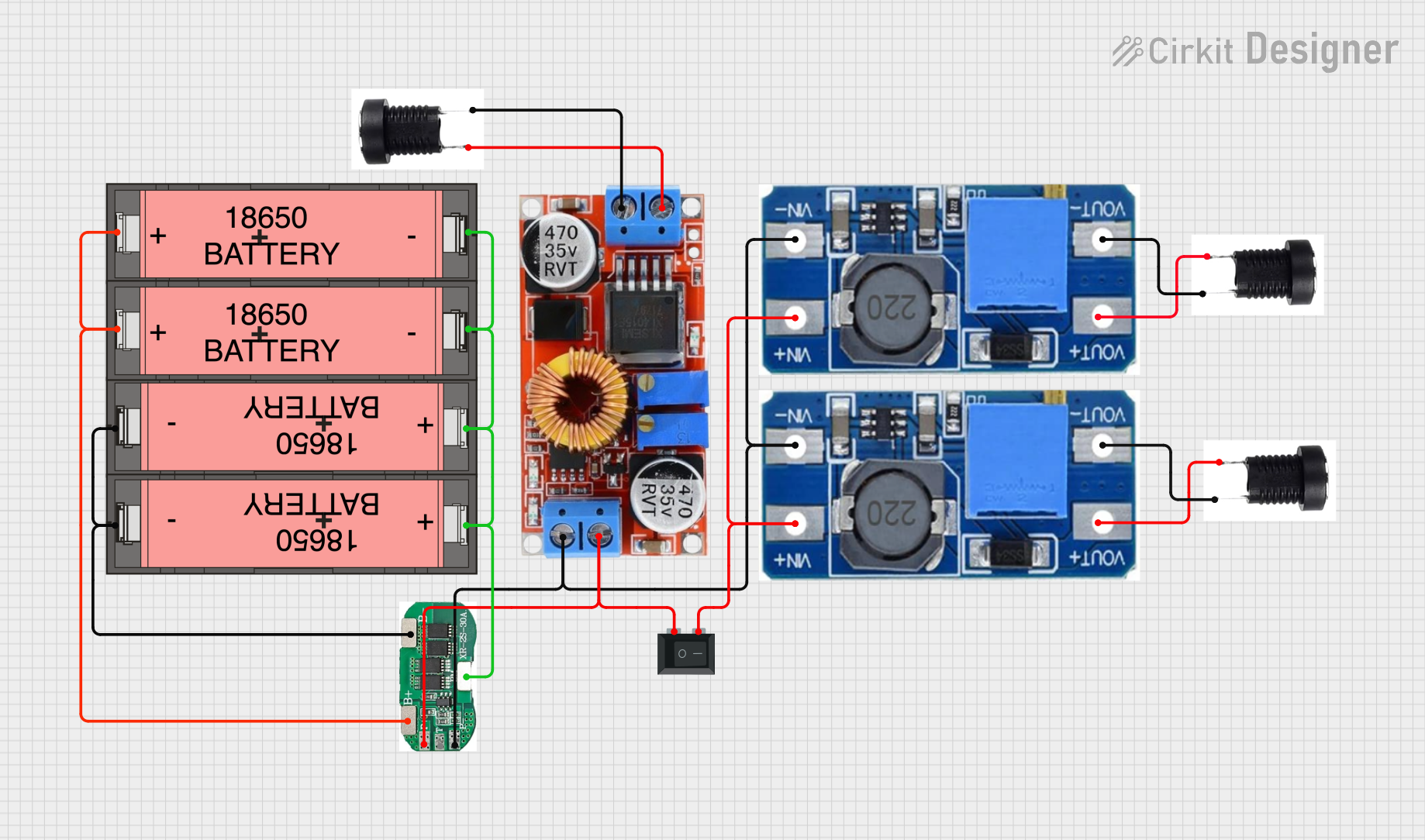
 Open Project in Cirkit Designer
Open Project in Cirkit Designer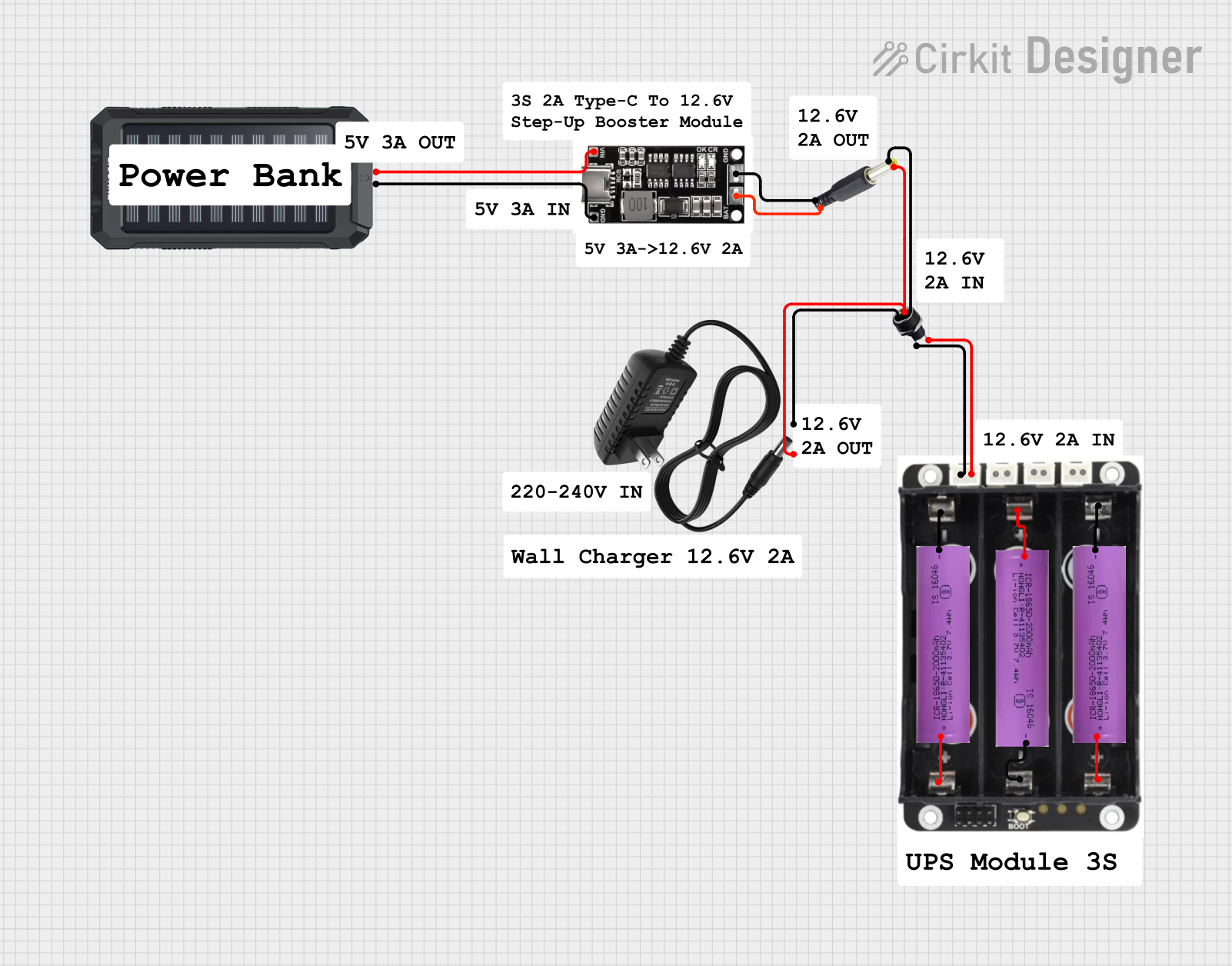
 Open Project in Cirkit Designer
Open Project in Cirkit DesignerExplore Projects Built with Type-C USB 2-3S BMS 15W

 Open Project in Cirkit Designer
Open Project in Cirkit Designer
 Open Project in Cirkit Designer
Open Project in Cirkit Designer
 Open Project in Cirkit Designer
Open Project in Cirkit Designer
 Open Project in Cirkit Designer
Open Project in Cirkit DesignerCommon Applications and Use Cases
- Power banks and portable chargers
- Lithium battery-powered devices
- DIY electronics projects
- Robotics and IoT applications
- Backup power systems
Technical Specifications
Key Technical Details
- Input Voltage (via Type-C USB): 5V DC
- Output Voltage (Battery Pack): 7.4V-12.6V (depending on the number of cells)
- Maximum Charging Current: 3A
- Power Rating: 15W
- Battery Configuration: 2S (7.4V) or 3S (11.1V) lithium battery packs
- Protection Features:
- Overcharge protection
- Over-discharge protection
- Short-circuit protection
- Overcurrent protection
- Operating Temperature Range: -20°C to 60°C
- Dimensions: 50mm x 20mm x 5mm (approx.)
Pin Configuration and Descriptions
The Type-C USB 2-3S BMS 15W has the following key connections:
| Pin/Port | Description |
|---|---|
| Type-C USB Port | Input for charging the battery pack and data transfer. |
| B+ | Positive terminal of the battery pack. |
| B- | Negative terminal of the battery pack. |
| BM | Middle connection point for balancing 2S or 3S battery packs. |
| P+ | Positive output terminal for the load. |
| P- | Negative output terminal for the load. |
| LED Indicators | Status LEDs for charging, fully charged, and fault conditions. |
Usage Instructions
How to Use the Component in a Circuit
- Connect the Battery Pack:
- For a 2S battery pack, connect the positive terminal to
B+, the negative terminal toB-, and the middle connection toBM. - For a 3S battery pack, connect the positive terminal to
B+, the negative terminal toB-, and the intermediate connections toBMas required.
- For a 2S battery pack, connect the positive terminal to
- Connect the Load:
- Attach the load (e.g., a motor or circuit) to the
P+andP-terminals.
- Attach the load (e.g., a motor or circuit) to the
- Charging:
- Use a Type-C USB cable to connect the BMS to a 5V power source for charging.
- The LED indicators will show the charging status.
- Ensure Proper Ventilation:
- Place the BMS in a well-ventilated area to prevent overheating during operation.
Important Considerations and Best Practices
- Battery Compatibility: Ensure the lithium battery pack is compatible with the 2S or 3S configuration.
- Avoid Overloading: Do not exceed the 15W power rating or 3A charging current.
- Secure Connections: Use proper connectors or soldering to ensure stable and secure connections.
- Monitor Temperature: Avoid using the BMS in environments exceeding the specified temperature range.
- Polarity Check: Double-check the polarity of all connections to prevent damage to the BMS or battery pack.
Arduino UNO Example Code
If you are using the BMS to power an Arduino UNO, you can monitor the battery voltage using the following code:
// Arduino code to monitor battery voltage using an analog pin
const int batteryPin = A0; // Connect the battery's positive terminal to A0 via a voltage divider
float voltage = 0.0;
void setup() {
Serial.begin(9600); // Initialize serial communication
pinMode(batteryPin, INPUT); // Set the battery pin as input
}
void loop() {
int sensorValue = analogRead(batteryPin); // Read the analog value
voltage = sensorValue * (5.0 / 1023.0) * 3;
// Convert the analog value to voltage. Adjust the multiplier based on
// the voltage divider ratio used in your circuit.
Serial.print("Battery Voltage: ");
Serial.print(voltage);
Serial.println(" V");
delay(1000); // Wait for 1 second before the next reading
}
Note: Use a voltage divider circuit to step down the battery voltage to a safe range (0-5V) for the Arduino's analog input pins.
Troubleshooting and FAQs
Common Issues and Solutions
BMS Not Charging the Battery:
- Cause: Incorrect wiring or damaged battery pack.
- Solution: Verify all connections and ensure the battery pack is functional.
Overheating During Operation:
- Cause: Exceeding the power rating or poor ventilation.
- Solution: Reduce the load or improve ventilation around the BMS.
LED Indicators Not Working:
- Cause: Faulty LEDs or insufficient input power.
- Solution: Check the input power source and inspect the LED connections.
Load Not Receiving Power:
- Cause: Faulty connections or triggered protection circuit.
- Solution: Check the
P+andP-connections and reset the BMS by disconnecting and reconnecting the battery.
FAQs
Can I use this BMS with a 1S battery pack?
- No, this BMS is specifically designed for 2S or 3S lithium battery packs.
What happens if I connect the battery pack with reversed polarity?
- The BMS may be damaged. Always double-check the polarity before connecting.
Can I use a higher voltage input for charging?
- No, the Type-C USB input is designed for 5V DC only. Using a higher voltage may damage the BMS.
How do I know when the battery is fully charged?
- The LED indicator will show a "fully charged" status when the battery reaches its maximum voltage.
By following this documentation, you can safely and effectively use the Type-C USB 2-3S BMS 15W in your projects.